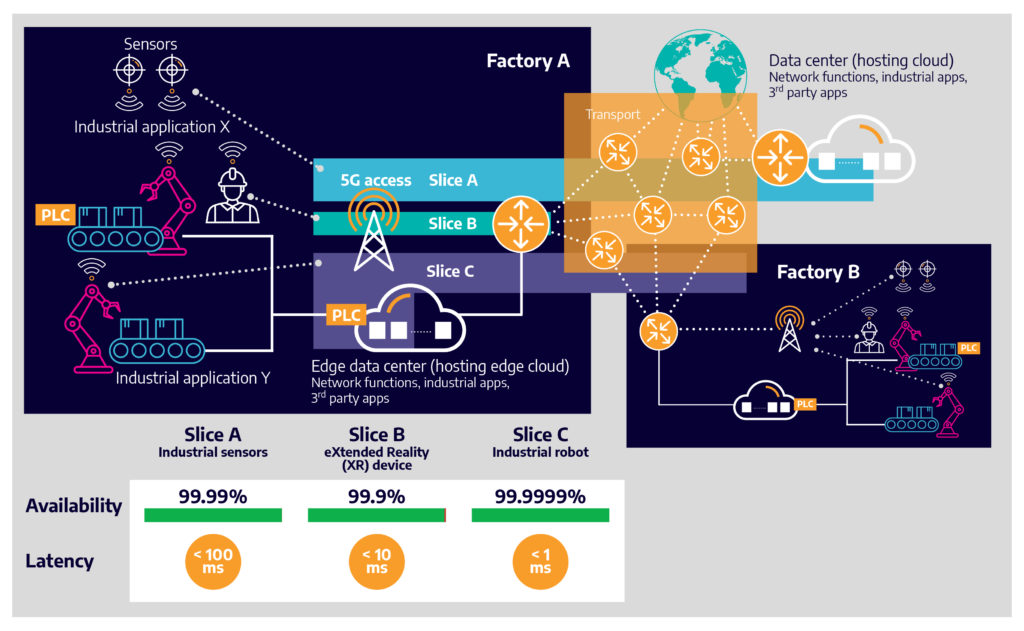Industrial IoT and manufacturing will be one of the largest 5G markets

Industrial IoT and manufacturing will be one of the largest 5G markets
Private 5G networks are attractive to the largest manufacturers in factory and industrial automation, where they can control security and architecture. To gain a legitimate share, mobile operators need to focus on "mobile" use cases in IIoT, design service packages with security and performance guarantees, and collaborate with partners.

The Internet of Things (IoT) is often associated with exciting consumer innovations such as smart homes, connected cars, smart retail or wearables. But with the improvements brought about by 5G mobile connectivity, the entire industry will experience massive disruption. ABI Research expects digital factory revenue to grow to $375 billion by 2030, up from the current $59 billion. Over the next decade, machine tools, asset tracking, and networked programmable logic controllers will see the largest growth in connected services revenue.
The Industrial Internet of Things, also known as IIoT, is the main pillar of Industry 4.0. Industry 4.0 is the fourth industrial revolution, with factories becoming more and more automated, thanks to full connectivity and the ability to easily connect anything from anywhere. Offering high capacity, wireless flexibility, and low-latency performance, 5G is a natural choice to support the future of industrial digitalization.
Besides "cutting the cable", what can 5G bring to industry?
Industrial IoT covers a variety of use cases with different needs, but generally speaking, it is a combination of large-scale IoT, critical IoT, and broadband IoT. In manufacturing, 5G can be used to track and process data from sensors that monitor every product at any stage of the production or delivery process (large-scale IoT). Industrial robots can benefit from ultra-reliable low latency and high availability (critical IoT). The high capacity provided by 5G (Broadband Internet of Things) provides employees with security cameras or augmented reality devices.
Other industrial IoT examples can be found in mining, agriculture, and container ports, where asset tracking, reliable robotic control, and automated monitoring are only possible with 5G.
5G offers high capacity, wireless ubiquity and flexibility, and low latency performance. "Cut the cable" is the natural choice to adapt more easily to the physical location of operations, avoid unreliable WiFi, and move away from the many different IoT connectivity standards in use today, such as LoRa. 5G also offers increased reliability and the ability to provide network slicing with specific availability and latency guarantees for different types of use cases. These network slices can be dynamically created or modified as needed.
If mobile operators focus on the right use cases and partnerships, there is a huge opportunity
Industrial IoT is a huge opportunity for network operators because of its huge and diverse market potential. A recent 5G Business: A Market Compass 2030 report found that by 2030, 47% (up to $700 billion) of the total ICT market powered by 5G will be served by network operators.
But staying relevant can also be a challenge for operators, as 5G offers businesses the possibility to create their own private networks using unlicensed spectrum. German electronics maker Bosch, which recently applied for a dedicated 5G license, says 5G dedicated campus LANs are the way forward, controlling security and architecture.
In addition, 5G opens the market for numerous industry players who will compete or collaborate with operators to provide 5G solutions to enterprise customers. To partner or compete with these new players, operators will need to change their current mindset, improve channel landing and billing systems to support different types of partners, and enable different service levels for 5G applications.
Mobile operators will have the opportunity to profit from different services based on the quality of service (QoS) required for each type of 5G service or application. This will be extremely important for the business-critical Industrial IoT. The ultra-low latency and high availability required by industrial robots requires stricter service level agreements (SLAs) than a set of sensors, not just basic connectivity.

To ensure business productivity, performance visibility and control is required across different network slices for each industrial application and plant
What are the challenges in meeting 5G Industrial IoT performance requirements?
Importantly, MNOs are able to measure and manage different 5G service performance requirements through tighter quality controls and be able to demonstrate that all services meet the required service guarantees. Operators need to take more responsibility to ensure that latency, reliability and connectivity are available 24/7 and prevent any performance degradation.
But collecting performance data is not just an end in itself. This data needs to be processed and digested in order to detect and fix any anomalies or degradations before they affect service quality. This becomes even more important in the 5G era, as the volume and complexity of data requires highly automated processing.
Industry 4.0 is creating millions of new endpoints that need to be interconnected. Existing performance management systems, however, cannot support it, opening up opportunities for new specialists and suppliers.
Accedian's Skylight can flexibly measure the performance of the underlying physical network infrastructure and scale it to each different 5G network slice. Performance measurements can be automated and coordinated to suit the specific requirements of industrial application needs. Skylight also provides visibility between different suppliers and technologies through a single pane of glass. We call it "Skylight Performance Analysis" - it provides a way to visualize service availability and performance in real time, as well as the insight needed to take action when necessary. Skylight analytics also helps in reporting SLAs related to different service levels offered by operators.